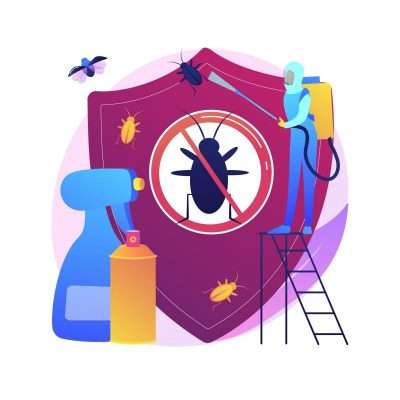Are you looking to get rid of those nasty pests roaming freely in your house? Do it yourself pest control is a great way to make your home pests free again. Instead of spending dollars on professional services, you can do it yourself in a lot less amount. It will also save time because you don’t have to deal with a professional every month or so. And it’s not as difficult as many people think it is!
Pest control is important for many reasons. Rodents and insects such as roaches, ants, termites, bedbugs, etc., are super annoying. Not to mention, they can also damage your property. For example, termites can cause structural damage, whereas moles can destroy your garden by creating underground tunnels. And these are reasons enough to keep pests out of your house.
But what makes it necessary to get rid of them is that they can be seriously dangerous to your health. Rodents are known for spreading diseases such as plague, tularemia, and Hantavirus. These diseases usually spread through rodents’ bites or if you come in contact with their urine or feces (PestWorld.ORG). Similarly, mosquitoes carry diseases such as malaria and the Zika virus.
In this article, we will discuss some of the most effective do it yourself pest control ideas. These include both homemade remedies and pest control products.
But, before you start with pest control remedies, it’s essential to identify the pests you’re dealing with correctly. Let’s first discuss it in detail so that you can complete your pest control project successfully.
Identifying the Type of Pests in Your House
Figuring out which pests you are dealing with in your house is pretty important for do it yourself pest control. It’s because there are different remedies and products to get rid of different pests. For example, you’ll need mousetraps to exterminate mice, but you cannot use the same to eliminate roaches, spiders, or ants.

You can tell the type of pests by simply looking at them. Or, if you’re unaware of how some common pests look like, you can Google their photos to identify them.
But, if they’re hiding and you’re unable to get a good look at them, you should look for other signs. Look for the damage they are causing and the droppings they leave behind. If there are small holes in your floors or walls, it could be a clue that rodents are hiding somewhere. Similarly, dark droppings that look like black pepper usually indicate cockroach infestation.
Best Do It Yourself pest control Ideas
Here are some amazing do it yourself pest control techniques that anyone can apply easily:
Mint leaves and Coffee grounds
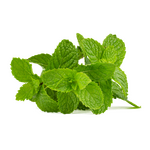
If your house has been invaded by ants army, a simple way to eliminate them is using mint leaves. While mint tea leaves are famous for their refreshing power, ants don’t really like their smell. So you can simply place them in the areas where you see ants, and they will go away.

Another effective way to keep ants away is sprinkling coffee grounds around your windows and doors.
Do it yourself dust mite repellent spray
Add Lavender or Rosemary oil in a spray bottle filled with water. You can also use clove or peppermint instead, depending on what is easily available. Mix the solution well, spray it on your bed and let it dry. Don’t use too much mixture; light spray will do fine. This spray is effective in keeping mites away because they hate the smell of these ingredients.
Another easy way to keep dust mites away is to make a mixture of lemongrass and basil. It is also great for repelling fleas.
Fly trap

If you’re done dealing with those annoying fruit flies, you can create a simple trap for them at home. Take a blow or bottle and fill it with apple cider vinegar because flies love its smell. Now cover it with plastic wrap and punch small holes in it using a pencil. This will create entry points for the flies but won’t allow them to get out.
Chile pepper solution

Chile pepper spray works as a powerful repellent for a number of pests. You can make it from Chile pepper powder or fresh Chile peppers. If you’re using fresh Chile peppers, make a puree of one cup of water and a half cup of peppers. Now add one quart of water to it and boil it. Let it cool and strain the solution. Finally, add a few drops of liquid soap and spray it on your plants.
If you want to make the spray from powder, add one tablespoon of pepper powder to one quart of water. Lastly, add a few drops of liquid soap to it and use the mixture on your plants.
Although it is an effective do it yourself technique, you should be very careful while using hot Chile pepper. Always wear gloves and keep the spray away from your nose and eyes.
Camphor for bedbugs

To eliminate bedbugs from your room, place burning camphor in it and close all the windows and doors. Check your room after 30 minutes, and you’ll find all the bedbugs dead.
Vinegar or lime spray

Looking to get rid of spiders? Make a mixture of water and vinegar and spray it over the spiders wherever you see them. This solution is pretty effective in killing spiders instantly because spiders cannot stand the scent of vinegar.
Citrus is another acid that spiders hate, so you can also use it to eliminate them. Simple add lime juice to a water-filled spray bottle and use the solution on your countertops and around your doors and windows.
You can also use lemon peels in your garden to keep spiders away.
Vegetable oil solution or soap spray

Add one tablespoon of soap to one cup of vegetable oil and mix thoroughly. Then add two tablespoons of this solution to one quart of water and shake it well. Now spray it over your plants that have been affected by pests such as mites and aphids, etc. This solution works as a homemade insecticide as the oil in it suffocates the insects by covering their body.
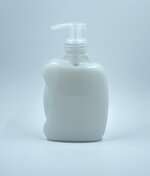
Alternatively, you can also make an insecticide using soap to control insects such as whiteflies, mites, beetles, etc. Take one quart of water and add one and a half teaspoons of liquid soap to it. Then spray the solution on your plants. It is best to use this spray either in the evening or early morning.
Pest control spray

If you’re looking for a remedy to control insects in your garden, try using this easy-to-make garlic-mint spray. Blend garlic cloves and mint leaves in a chopper. Then add a small amount of cayenne pepper and a bit of dishwashing liquid to it. Boil the mixture and leave it for a night to let it sit. Now put it in a bottle and spray it over your garden to quickly get rid of those pests.
Borax and sugar mixture
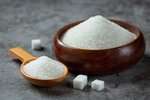
Add equal amounts of sugar and borax in a bowl or container and spread it around your doors, windows, and cracks, etc. This mixture is great for eliminating roaches because roaches are fond of sugar, but borax works as poison for them.
Neem oil insecticide
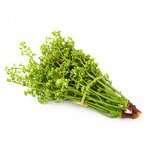
Neem oil is an excellent natural insecticide as it can get rid of insects at any stage of their life cycle. It is great for repelling insects that feed on plants. And it also acts as a natural fungicide, so you can use it to fight fungal infections affecting your plants. But what makes neem oil even better is that it is not harmful to birds, wild animals, or pets.
To make a neem oil insecticide, add one tablespoon of liquid soap to two tablespoons of neem oil and shake well. Then spray it on your plants. You can also use it to prevent insect infestation by applying it to the plants that the insects usually attack.
Tomato leaves mixture

Tomato plants are great for controlling aphids and many other insects. To make the spray, take two cups of tomato leaves and chop them finely. Then add them to one quart of water and let the mixture sit overnight. Strain the leaves and spray the solution over your plants.
Basil pots
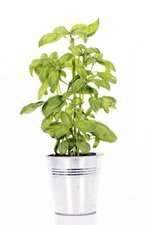
Basil is pretty useful in keeping flies away because they are not very fond of basil’s smell. You can simply place pots of basil plants near your doorways, windows, and on your kitchen countertops.
Diatomaceous Earth for pest control
Diatomaceous earth is a natural insecticide as it kills insects by absorbing lipids from their bodies, which dehydrates them. It is great for getting rid of crawling insects such as slugs and snails and is available easily. You can use it by simply sprinkling it around your plants. But keep in mind, you need to reapply it every time it rains.
Garlic juice spray
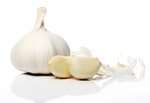
You can make garlic juice spray to keep mosquitoes from biting you for as many as six hours. To make the spray, mix five parts of water and one part of garlic juice. Then apply this non-toxic mixture to your body.
Do it yourself mosquito trap
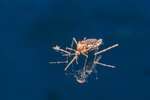
Mix one cup of sugar to one cup of water and boil it. Then add around two cups of water to the solution and let it cool. Finally, add one teaspoon of active yeast to the solution.
Now, take a bottle, cut it in half and tuck the upper half into the lower half. Pour the prepared mixture into the trap and secure it with tape. The sugar attracts mosquitoes, and they get stuck in the solution.
Talstar P
Talstar P is a powerful professional-grade pest control product. You can use it to eliminate more than 75 different types of insects, including termites, fleas, and mosquitoes. It works for both indoor and outdoor pest control, and usually, one bottle is enough for a year. It’s because once you’ve sprayed it on the infected area, it kills pests for more than three months.
Moreover, Talstar P doesn’t have any odor, and it doesn’t get affected by rain. Another great advantage of this product is that it doesn’t irritate the skin. But, you should still wear gloves and protective clothing while using this product.
For outdoor pest control, add one ounce of Talstar P to one gallon of water and mix well. Apply the solution using a sprayer to your house foundation and spray it around windows and doorways.
It is best to use the solution every three months. But if you want a repeated application, never use it more than once every four weeks.
Demon WP
Demon WP is another effective professional-grade pesticide that you can use to eliminate a variety of pests. It is pretty great for controlling ants, crickets, cockroaches and spiders, etc. It comes in the form of water-soluble powder and contains cypermethrin (famous for its speed and strength in controlling pests). You will need a sprayer to apply this product to affected areas in your house.
Mouse Trap
You can use different types of traps to exterminate mice. These include poisonous baits such as yellow phosphorus or arsenic, glue traps, and snap traps. To use poisonous baits, simply place them in the areas of your house where you see mice more frequently. Once they eat them, you’ll find dead mice somewhere in your home.
Glue trap includes covering a small piece of cardboard or a tray with a strong adhesive. When mice land on it, they get stuck and die eventually. Although effective, glue traps are a bit cruel, so it’s best to use snap traps.
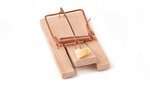
Snap traps are not only effective, but they are easy to use as well. Once you’ve trapped the mouse, you can conveniently toss the remains in the trash can. Peanut butter and chocolate syrup are the two most attractive mouse baits that you can use on snap traps. But to trap the mice successfully, you should use the right amount of snap traps. You will need around 20-24 snap traps for an average-sized house.
It is also important to place the traps in the right areas. Mice usually roam along the walls due to poor vision. So, it’s best to set the traps along the walls, especially where you find mouse droppings.
Moles trap
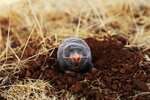
To set a mole trap in your garden, place a 2-5 gallon bucket in an active mole tunnel. You can dig a hole in the tunnel if it is not deep enough to accommodate a 2-5 gallon bucket. Seal the boundary of the bucket with mud and place plywood over the hole. Check the trap daily, and when the mole falls in it, take it outside your house.
How to prevent pests from infesting your house again
These simple yet effective do it yourself pest control ideas to prevent reinfestation can make your life so much easier:
Seal the entry points
Any natural remedy or product won’t be of any use if more pests keep entering your house. That is why it is essential to identify their entry points and take proper precautions. Many people think that pests like to stay away from a clean and tidy home. But the truth is these tiny creatures can enter any house even if it is well-kept.
Small pests like roaches, ants, etc., can sneak into your house pretty easily because they only need a little space. Sometimes your walls have so many passageways that you’re unaware of because they look super solid. So, it may take a little effort to spot these. Larger holes are easier to identify, and they are usually the main entry points for mice and other big pests. You can seal these with duct tape or even old clothes.
Look for any gaps in walls and other areas such as vents, doors, windows, exhaust fans, etc., carefully. It’s important not to rush it because even a single hole is enough for these intruders to infest your house. You can insert copper mesh in any gap you find in your siding joint and seal it with expanding foam. For windows and doors, using a weatherstrip is pretty effective.
Also, examine if the vent is properly sealed with the wall. Sometimes the damper of the vent is broken, which makes for an easy pests’ entry point.
If you’re dealing with raccoons, your chimneys might be the culprit. Cover them with chimney caps or if you already have, check if the caps are broken and replace them quickly. Also, cut the overhanging branches of the trees to stop raccoons from getting on your roof.
Eliminate moisture and water issues
Humidity helps pests such as spiders and silverfish thrive, so it’s crucial to control it. You can place plants that are good at absorbing moisture, or you can also use a dehumidifier.
Another factor to focus on is to keep your walls and foundation dry. It’s because insects like centipedes are mostly attracted to moist areas. If you have soil around your walls, windows, and house exterior, rake it away. Remember to trim your bushes regularly as well.
If you have leaky sinks and faucets, you need to fix them quickly because they are the roaches’ best friend. Also, standing water attracts mosquitoes and allows them to breed. So, it is essential to fix any standing water issues and keep your surroundings clean.
Avoid using paper bags

Usually, the most common mistake most of us make is placing paper bags under the sink of our kitchen. Although it is a handy kitchen accessory, it attracts cockroaches that can take over the house in no time. It’s also important to get rid of damp sponges, dish towels, and scrub pads.
Store your food properly
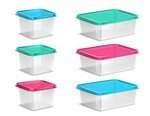
Avoid leaving your food in open containers because pests like roaches are quick to spot it. Plastic containers are best for storing food. Similarly, mice and raccoons get attracted by pet food. So avoid leaving it outside. It’s best to keep the pet food either in plastic containers or metal cans sealed with lids.
Also, try to keep your shelves, sinks, pantry, drawers, etc., free of any crumbs or food leftovers.
Fence your garden
If you have a vegetable garden consisting of sweet corn, it is at high risk of raccoons attack. But you can protect it using electric fencing. Also, if you have garden fish ponds, cover them with netting.
You should also keep your trash cans far away from your garden because garbage makes for perfect raccoon food.
Remove spider webs

Whenever you spot a spider web anywhere in your house, remove it immediately using a broom. And, always keep those areas clean and tidy where spiders usually build their webs.
Important things to consider for Do It Yourself pest control
When you are doing pest control yourself, it is best to consider some important factors. You should examine the size of the infestation carefully. This will help you decide the right quantity of pest control products or spray, etc., you need. If you’re using chemicals, you should always use protective clothing and equipment such as masks and gloves.
Moreover, the health and safety of all the family members should be your priority when doing pest control. Your family members, especially children or the elderly, may be sensitive or allergic to the strong smell of chemicals. So, you should always consider it before using chemicals.
Final Thoughts
Pests are annoying little creatures that can damage the structure of your house and also pose health threats. You can get rid of them with some easy do it yourself pest control tricks. These include natural homemade solutions and remedies and professional-grade products. But first, you need to identify the type of pests in your house. This will help you choose the right product or remedy to get rid of them. When doing pest control yourself, always take care of your and your family’s safety first and use protective equipment.
Once you’ve eliminated the pests from your home, it is equally important to take preventive measures. Otherwise, your efforts will go in vain.

